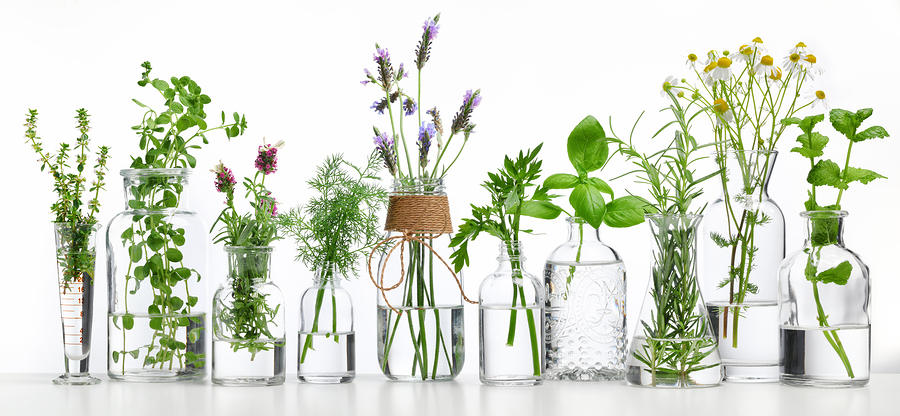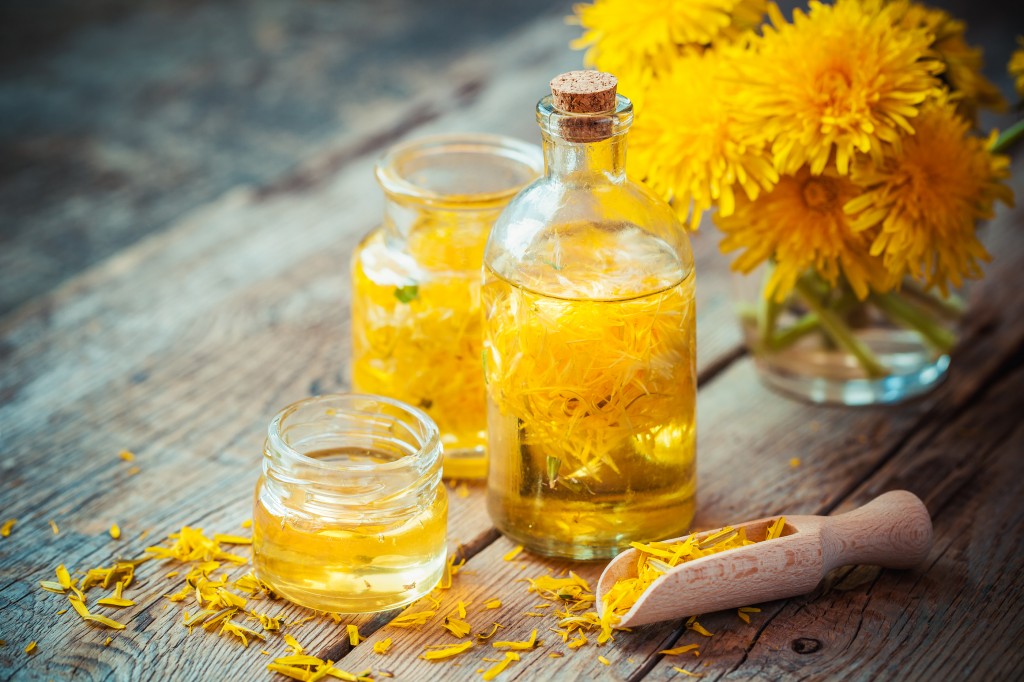- Make It Yourself Lavender Heart-Shaped Bath Bombs!
- 20 Things You Never Knew About “Down There”
- 12 Best Foods For Those Suffering From Arthritis Pain
- 12 Personal Hygiene Mistakes Almost Everyone Makes (Mom Never Told You About #4!)
- 15 Medicinal Plants And Herbs From The Cherokee People
- 12 Mind-Blowing Benefits Of Drinking Coconut Water During Pregnancy
- 12 Outstanding Winter Foods That Won’t Fatten You Up Like A Christmas Turkey
Beneficial Weeds You Must Know About
In the world we live in today, it may seem like an unnecessary action to be on the lookout for weeds in your backyard that could help you medicinally or with nutrition. It seems that we have all the medicine and food that we could need to sustain us in any kind of environment. Unfortunately, this might not be true. Sources estimate that by 2050, there will be 2 billion more people to feed and that there isn’t enough food to go around unless we double the amount of food we’re currently farming. When other factors are taken into account, such as the environment that is being destroyed to make way for farms and all of the genetically modified crops and harmful pesticides being used to increase crop yield, it might start sounding like a good idea to find food in your backyard.
RELATED: Food Parts You Never Knew You Could Eat
And looking for food in your backyard might not even have to be as time consuming, or even as hard work, as you think it will be. Yes, gardens are a great way to add food to your family’s plates without buying from the store but there might be food already growing in your backyard and you don’t know about it. “Weeds” are abundant in everyone’s backyard and many of those are actually very beneficial nutritionally and medicinally.
No matter the size of your yard, if you haven’t resown it to make it an even layer of grass, you can find at least one or two of the below ‘weeds’ to harvest and use. Most of the weeds below have multiple uses and one can use either the leaves or the flower/seed part of the weed. Take a look at the most beneficial weeds down below and see if your backyard has what it takes to feed you.
1. Amaranth
This weed actually has many varieties, as many as 60, and has been cultivated in the past as well as presently, although less so now. It was a popular food item for the Aztecs and is still grown in many areas of South America. The wild varieties of this plant don’t grow as tall or have as many flowering heads with seeds, but they can still be found in North America growing without being planted. In fact, it has been labeled a ‘weed’ mostly because of its tolerance against glyphosate – a chemical used by Monsato in their famous Round Up pesticide. In the wild it grows as a relatively tall plant with flowers that turn deep red in the late summer or fall. These flowers are also the ‘seed’ of the plant and once ready to harvest look like small grains, although it is technically known as a pseudo-cereal.
The leaves of the Amaranth can be harvested as well and cooked to most closely resemble spinach. The grain of the plant can be ground, roasted, or popped to further create food from them. The plant also has a lot of nutrition and is one of the only recognized grains that contains Vitamin C. One serving of amaranth grains also contains more than 100% daily value of manganese, has few carbohydrates, 82% of the daily recommended iron, 30% of calcium and has high concentrations of potassium, magnesium, and phosphorous. Amaranth is also high in protein due to lysine, an amino acid that has a protein content similar to that of milk making it easily digestible. When looking for amaranth, search for large, broad leaves or flowers that are deep red in color already.
Continue to Page 2
2. Burdock
You know those little burs that stick to you sometimes when you’re walking through the woods or in a larger patch of nature? Those are the seeds of the burdock plant, and if you see those seeds, be on the lookout for the plant as well. This weed is pretty prevalent in Northern America and the root of this plant is what provides many nutritional benefits as well as being able to be used as medicine. For the root to be useful, the plant must still be relatively young as in its second year of growth all of the nutrients from the root go up into the plant and helping it grow. Look for plants low to the ground with very large leaves, veins radiating horizontally out from a middle vein. The leaves will also be white on the underside and have a soft and fuzzy feeling.
The root of the young burdock plant is very nutritious with a taste as a cross between a potato and a carrot. It is very high in starches and can be helpful in survival situations as it gives a tremendous boost to your energy. The root can also have oil extracted from it which has many medicinal uses. Burdock root oil can be used for helping to reverse hair loss and even for skincare. Poultices of the root can be used to treat minor wounds and cuts and a tea can be made from the seeds (the burs) to help lower fevers.
Continue to Page 3
3. Dandelion
One of the most abundant weeds in the United States, dandelions are a delight to children and reason to curse for landscapers. But this homely flower is such an abundance of nutrients and uses. All the parts of this plant can be used and each one has specific benefits for the body. The young plants are usually better to use for eating than the older ones, as they tend to get bitter, and the leaves can be used in salads or other dishes that require leafy vegetables. As for medicinal uses, there are plenty, even though none of them have been scientifically researched to test their accuracy or potency against any of the ailments they supposedly help against.
This does not mean that the plant isn’t helpful – there are plenty of old remedies that have been proven useful with recent scientific research and dandelion medicine might be the next one. Dandelion tea has been used as a mild laxative that is very beneficial to children if they are constipated. The plant is also rich in Vitamin A, C, E, and the B-complex as well as iron and protein. With that many helpful nutrients, how can the plant not be beneficial? Dandelion has also been known to be used for gallstones, joint pain, muscle aches, eczema, and bruises.
Continue to Page 4
4. Stinging Nettle
This prickly weed is native to North America and has a long history of being used in traditional medicine. The plant has relatively short leaves with serrated edges but the leaves and stems are not stinging themselves – in fact, what causes the stinging sensation are the stinging hairs present on the plant. The way the plant works is that when the stinging hairs are touches, the tip comes off and injects a concoction of chemicals that triggers an allergy-like reaction in our bodies. But stinging nettle is not all stings and unpleasantness.
In fact, this plant has many medicinal uses. It has been known to be helpful against seasonal allergies, since the plant itself can act as a sort of ‘vaccine’ for allergies. It is also helpful for joint pains, osteoarthritis and other inflammatory pains. The weed is rich in iron, calcium, potassium, manganese, and Vitamins A, D, and C. The weed can be used in teas, as poultices, or dried and used in infusions. To eat, the weed can also be used in soups, salads, and even frozen and used later.
5. Shepherd’s Purse
This weed is part of the mustard family and is found abundantly in many North American backyards and is actually one of the most common weeds in the world. The name of the weed comes from the shape of the seed pods of the plant which are heart-shaped in nature and resemble the shepherd’s purses that the shepherd’s used to carry. The weed has a peppery taste and can be used dried in place of pepper itself. Fresh, it can add a spicy punch to a salad or any dish it is used in.
The weed is high in Vitamin K and has been used historically as a way to treat wounds and regulate blood flow. It has been used by soldiers on the battlefield when medicines were scarce to treat wounds and stop bleeding and has roots in Chinese medicine as a treatment for hemorrhages and can be used for any kind of blood regulation. The plant can be made to be used both internally and externally and is helpful against nosebleeds and even menstrual cramps.
Continue to Page 5
6. Chickweed
The chickweed is a medicinal and nutritional plant and has a myriad of vitamins and nutrients that are valuable in both medicine and for food. This weed is one of few that is in fact a succulent and has been widespread throughout the world, most likely because of people taking the seeds of the weed from place to place. An interesting fact about this weed is that every night it seems to ‘sleep’ as the leaves fold over the buds of the plant.
To use the chickweed, harvest between May and July when the flowers are out and make a tea of the weed. The plant has been used for many different things in the past, including an old wife’s tale saying that it would help treat obesity. It has also been used postpartum as a detox, to improve circulation, against constipation, for hoarseness and coughs, and is even beneficial in treating minor kidney ailments. Chickweed can also be used as a poultice for itchy skin and superficial veins.
All of the above weeds are not only abundant in most North American backyards but they are also quite the hoard of vitamins and nutrients. Taking into account the six weeds listed here, there is bound to be at least one in the bunch that you can find in your yard. The medicinal uses of these weeds are beneficial as well and they can treat everything from nosebleeds to minor kidney ailments. Its sure that you can find at least one of the weeds here beneficial to your body.
References:





































